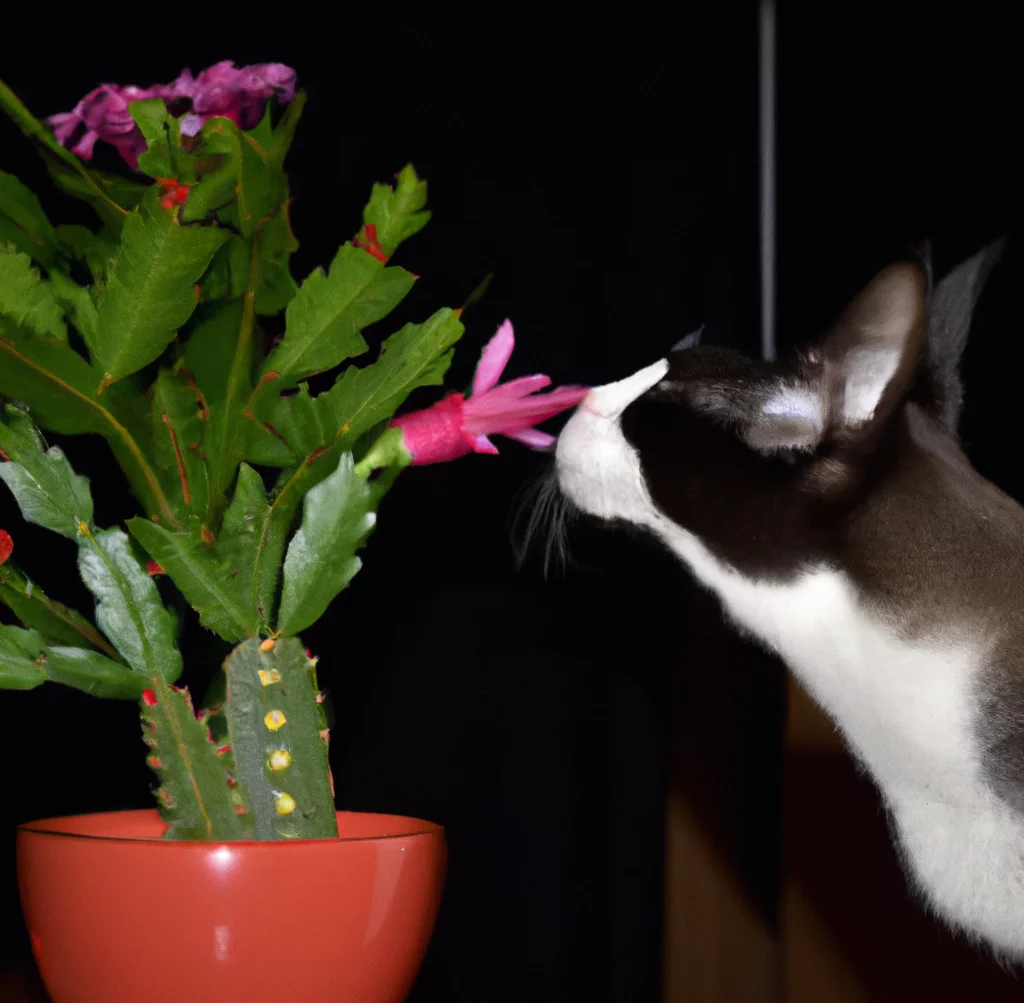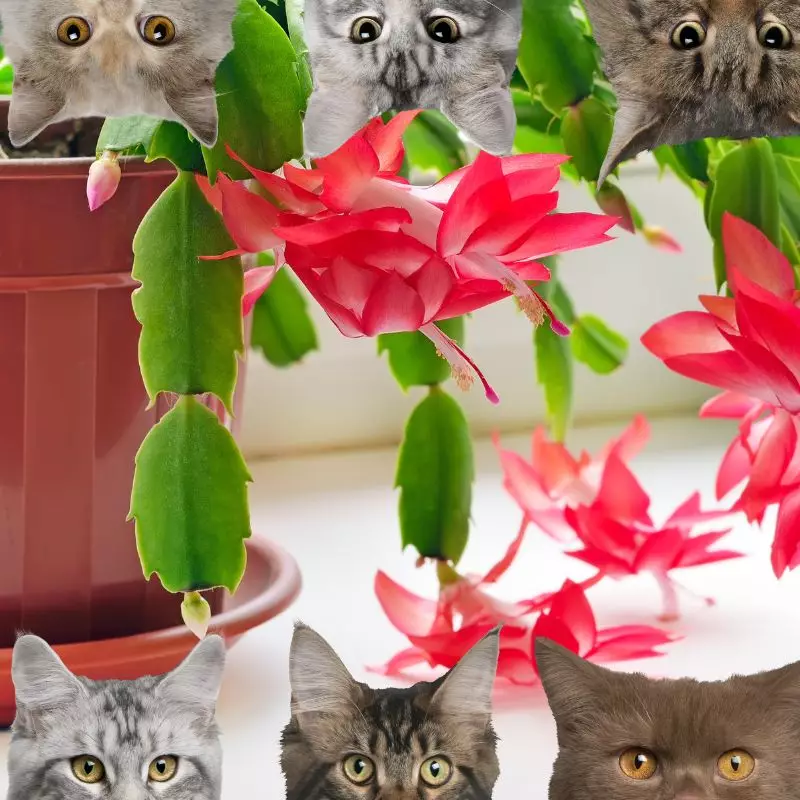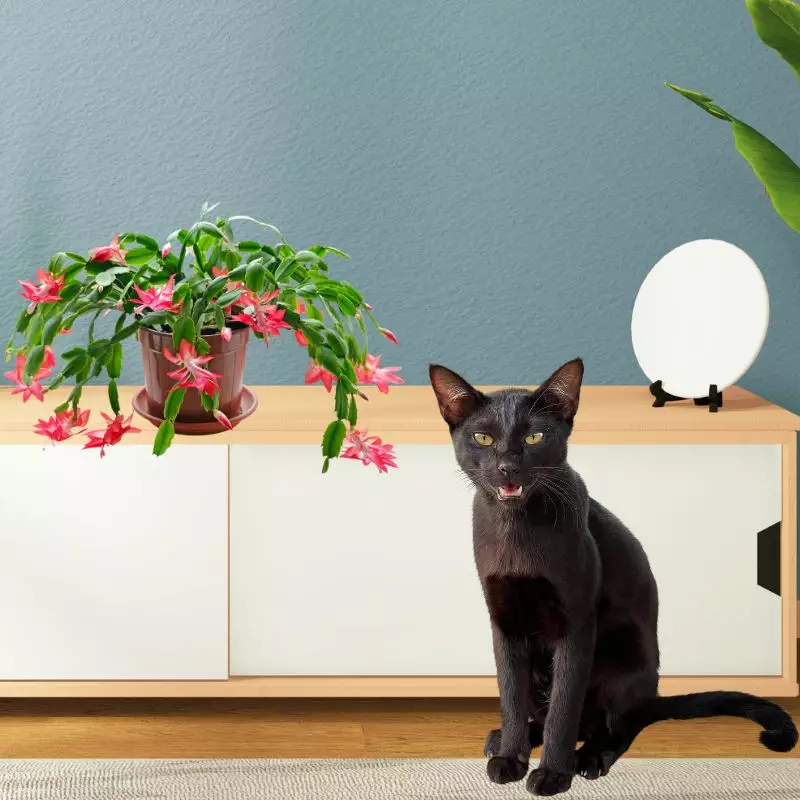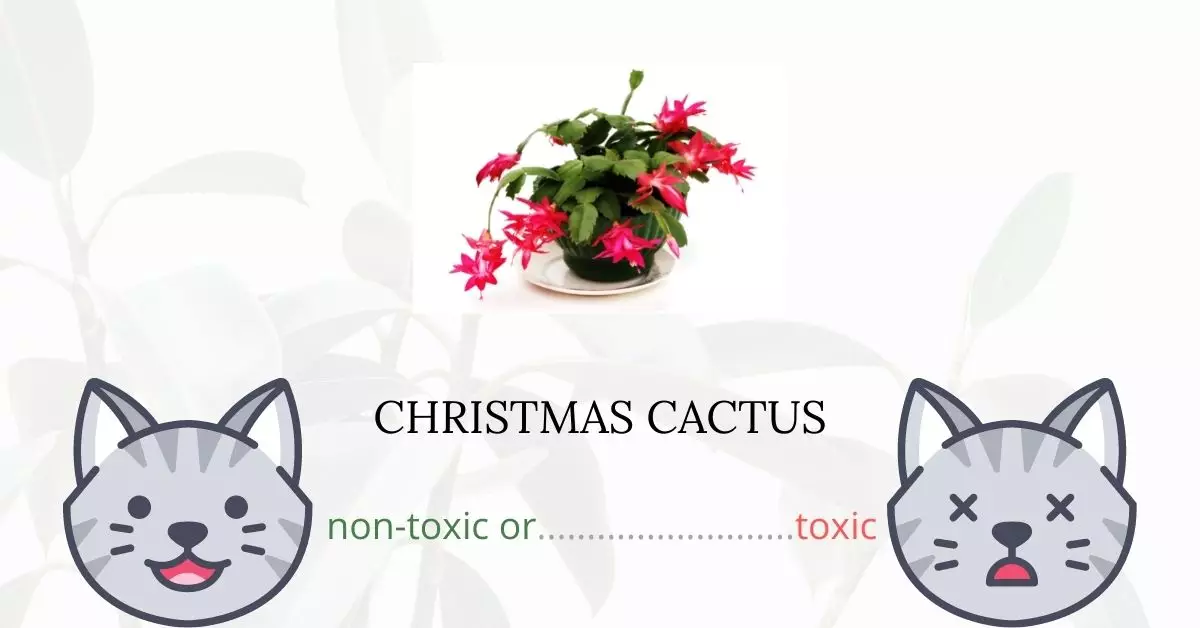No, Christmas cactus is not toxic to cats. In fact, the American Society for the Prevention of Cruelty to Animals (ASPCA) includes the Christmas cactus on their list of non-toxic plants for cats. If you have feline companions at home, you can be at ease growing this plant indoors as it does not contain substances harmful to them.
It’s important to note that this article has been written in close collaboration with a team of experienced DVMs (doctors of veterinary medicine). Their insights and expertise have enriched our understanding of the potential risks associated with various plants, ensuring that we provide accurate and up-to-date information. Moreover, to ensure thoroughness and reliability, we have referenced high-authority websites such as ASPCA and PetMD in our research on every plant, including the Christmas Cactus.
Can Cats Eat Christmas Cactus?

Cat owners shouldn’t be concerned if your cat considers Christmas cactus as a treat and consumes it. According to the ASPCA, Christmas cactus is not hazardous to both dogs and cats. Pets are not harmed by the cactus or the blooms. Non-toxic does not mean innocuous; a significant dose of the fibrous plant material is not dangerous but may upset the cat’s stomach and cause vomiting and diarrhea.
Another reminder for cat parents is to be cautious when using fertilizers and other chemicals on their houseplants. Chemical residues on plants may be inhaled or ingested by your felines and may cause them toxicity.
What is Christmas Cactus?

Schlumbergera is the genus name for Christmas cactus. It is a small group of cactus that may be found in the coastal mountains of south-eastern Brazil. These plants grow in frequently shady and moist environments, and they can appear quite different from their desert relatives. The majority of Schlumbergera species have stems that resemble leafy pads joined together and flowers that emerge from areoles at the stem joints and tips. Two species have cylindrical stems similar to other cacti.
In the wild, Schlumbergera species can form enormous bushes with woody roots, growing on trees (epiphytic) or on rocks (epilithic). They don’t have leaves, thus the green stalks act as photosynthetic organs. Cacti have peculiar structures called “areoles” that emerge at the ends of the stem segments. The blooms of the Christmas cactus either hang downwards and are almost regular, or they are held more or less horizontally, with the top side of the flower distinct from the lower side, as in most species.
Christmas cactus is the most commonly used common name in Europe, where plants are mostly grown for sale in the run-up to Christmas. The name “Thanksgiving cactus” is used in the United States, where cacti are produced for the Thanksgiving holiday in November.
Keeping Cats Away From Christmas Cactus

Protect your Christmas cactus from your cats by placing it in an inconspicuous place. Put it somewhere your cat cannot access or reach. Even cats are high jumpers, it is unlikely that they will get near plants that are placed in a space which are not within their arms’ reach.
You can also try spraying natural deterrents at your plants. You can buy these at pet supply stores or you can also make a DIY. A vinegar and water solution is a good deterrent. Cats hate the sour odor and taste of vinegar.
Plants to Avoid For Your Cats
If you are a cat owner and unsure if the plants growing in your yard are harmful to your cats, check out this list of toxic plants for cats. You can also check our list of non-toxic plants for cats.





